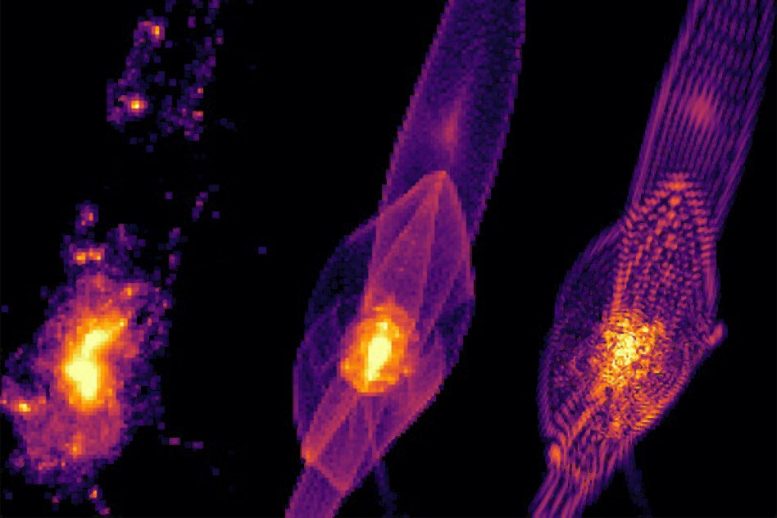
Simulations of how galaxies form in cold, warm and fuzzy (left to right) dark matter scenarios. Credit: Universities of Princeton, Sussex, Cambridge
New research conducted at the University of Sussex has simulated dark matter in a new way for the first time, disrupting conventional thinking about the makeup of the universe. The research, published yesterday, October 2, 2019, in Physical Review Letters, was done alongside Princeton, Harvard, Cambridge, and MIT universities and others.
Scientists have long suspected that a large proportion of the universe is made up of invisible particles, or dark matter, and that these must be very cold and heavy. But the search for proof has been elusive, leading researchers to consider alternative theories.
The new simulations show how stars and galaxies might have formed and grouped together at the origin of the universe if dark matter is very light in mass, rather than very heavy as most scientists have assumed.
A University of Sussex physicist worked with an international team to calculate how dark matter would behave, and how early galaxies would have looked, if it was ‘fuzzy’ and extremely light in mass.
The ‘fuzzy’ dark matter theory imagines that dark matter is comprised of tiny particles which are so light that they behave like quantum matter, and move in waves. Their quantum nature is seen on galactic scales. Conventionally, dark matter has been imagined to be cold (ie, where the particles don’t move). But doubts have set in around this theory as particle accelerators have so far been unable to create such dark matter. The new ‘fuzzy dark matter’ theory has gained in popularity as it makes sense according to particle physics, but it had never been simulated fully before.
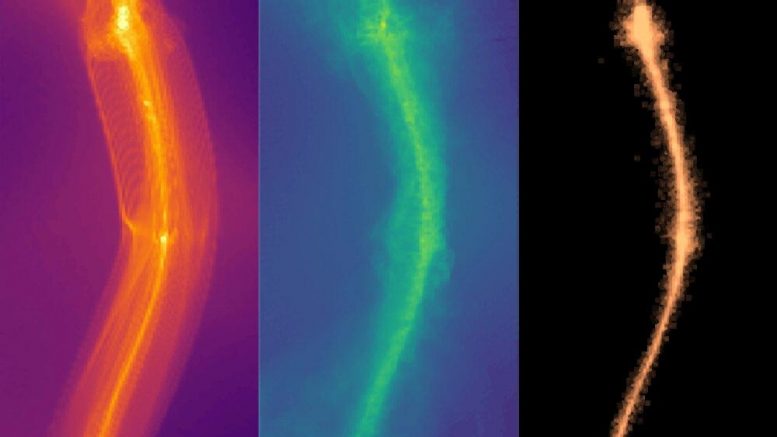
This image shows how the distribution of dark matter gas and start (left to right) appear in the fuzzy dark matter scenario. Credit: Universities of Princeton, Cambridge and Sussex
The simulations show the shapes galaxies would have made at the beginning of the universe if dark matter was fuzzy and extremely light. The team contrasts them with the familiar galaxies formed in the cold dark matter scenario. As the universe has aged, galaxies have changed shape. But when the new generation of telescopes is launched — including the James Webb Space Telescope, which Sussex physicists are working on — scientists expect to be able to look further back into the history of the universe to see what it used to look like.
Dr. Anastasia Fialkov, who conducted the research while at the University of Sussex, said:
“The nature of dark matter is still a mystery. The fuzzy dark matter theory makes sense in terms of fundamental physics, for instance, string theory, and so is an interesting dark matter candidate. And if the fuzzy dark matter theory is proven right by the new generation of powerful telescopes then we will have nailed down the nature of dark matter: one of the greatest mysteries of all.
“All around the world researchers are looking for dark matter, and particle physicists are building models for dark matter, and many of them have assumed that dark matter is ‘cold’. The fuzzy dark matter theory, where dark matter behaves as a wave on galactic scales, now presents a credible alternative scenario: that dark matter is tiny, and moves in waves behaving like quantum matter. Our simulations are the first ones to address galaxy formation in the context of fuzzy dark matter.”
Professor Kathy Romer, an astrophysicist with the School of Mathematical and Physical Sciences at the University of Sussex, said:
“The hunt for Dark Matter is a bit like ‘Where’s Wally?” Dedicated work over the last few decades by astronomers and particle physicists has given us some of the clues we need to look for, equivalent to Wally’s stripey jumper and hat, but we still haven’t found it. Maybe we shouldn’t have been looking for Wally (cold dark matter) all this time but should have been looking for Wenda (fuzzy dark matter) instead. This new research is so important because it provides another clue for us to look for, equivalent to Wenda’s stripey socks.”
Philip Mocz, Einstein Fellow at Princeton, says:
“Dark matter is a sort of cradle in which galaxies are born, and the cradle shapes also shape the galaxies. Different dark matter models predict different cradle shapes, particularly in the young Universe. It’s a great place to go looking and get new clues about what dark matter is.”
What does the research show?
The researchers found that if dark matter is cold, then galaxies in the early universe would have formed in nearly spherical “halos”. But if dark matter is fuzzy, the early universe would have looked different, with galaxies forming first in extended tails, or ‘filaments’. And the size, shape, and fragmentation of these filaments are different in each scenario.
The cold dark matter hypothesis works well to describe the large-scale structure of the observable universe. And so, most models of galaxy formation are based on the assumption that dark matter is cold. But there are discrepancies between observations and predictions of the cold dark matter. If you look at very small galaxies, the distribution of dark matter doesn’t fit with what the predictions of theoretical models. Moreover, as particle accelerators have not yet discovered dark matter, cold dark matter model becomes less and less appealing.
The team has developed the first realistic predictions of what early galaxies may have looked like in a universe dominated by fuzzy dark matter. The aim is to provide a map for upcoming telescopes, such as the James Webb Space Telescope, that may be able to look far enough back in time to spot the earliest galaxies. If they see galaxies with tails, or ‘filaments’ as simulated in this research, it may start to confirm that dark matter is fuzzy in nature.
Dr. Fialkov has now moved to the University of Cambridge.
Read Is Dark Matter Warm, Cold, or ‘Fuzzy’? for more on this research.
Reference: “First Star-Forming Structures in Fuzzy Cosmic Filaments” by Philip Mocz, Anastasia Fialkov, Mark Vogelsberger, Fernando Becerra, Mustafa A. Amin, Sownak Bose, Michael Boylan-Kolchin, Pierre-Henri Chavanis, Lars Hernquist, Lachlan Lancaster, Federico Marinacci, Victor H. Robles, and Jesús Zavala, 2 October 2019, Physical Review Letters.
DOI: 10.1103/PhysRevLett.123.141301

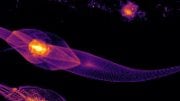

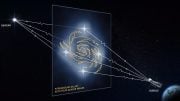


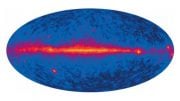
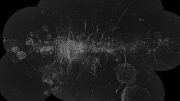
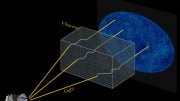
Fuzzy dark matter is what waves in wave particle duality. From the article:
> “Fuzzy dark matter is made up of particles that are so light that they act in a quantum, wave-like fashion, rather than as individual particles.”
Fuzzy dark matter fills ’empty’ space and is displaced by the particles of ordinary matter that exist in it and move through it, causing it to wave. Wave-particle duality is a moving particle *and* its associated wave in the fuzzy dark matter.
Try negative mass density (dark matter) as the vessel or cradle of dark energy displacement for positive mass density (ordinary matter) to form. The more dark matter, the deeper the displacement and the greater the force of gravitational acceleration. Further explanation can be provided via the book, ‘The Evolutioing of Creation: Volume 2’.
I really liked this article and can’t wait to find which theory is right. But Professor, how are we going to be able to trust your facts if they’re incorrect in this article!!!
It’s “WHERE’S WALDO” dear!!!
Hahaha!!!!
This is with reference fractal equivalent crack in leg bone you can reduce Apoe Protein reduction due to Saturn wave carrying dark matter in ATGU fabrication
With reference to fractal like crack development in leg we suspect due to dark matter infiltration due to Saturn waves as observed incase of Madam Sarah Bernhardt as observed in her palm print may be due to increased level of Apoe Protein that may be lowered to reduce catastrophic events in aged people.
The trouble is how to understand the axion oscillation in bone that increases the protein level of the legWith reference to fractal like crack development in leg we suspect due to dark matter infiltration due to Saturn waves as observed incase of Madam Sarah Bernhardt as observed in her palm print may be due to increased level of Apoe Protein that may be lowered to reduce catastrophic events in aged people.
The trouble is how to understand the axion oscillation in bone that increases the protein level of the leg
Sankaravelayudhan Nandakumar
. This new research on dark matter infiltration is so important because it provides another clue for us to look for, equivalent to Wenda’s stripey bow type rubber band socks says Sankaravelayudhan Nandakumar